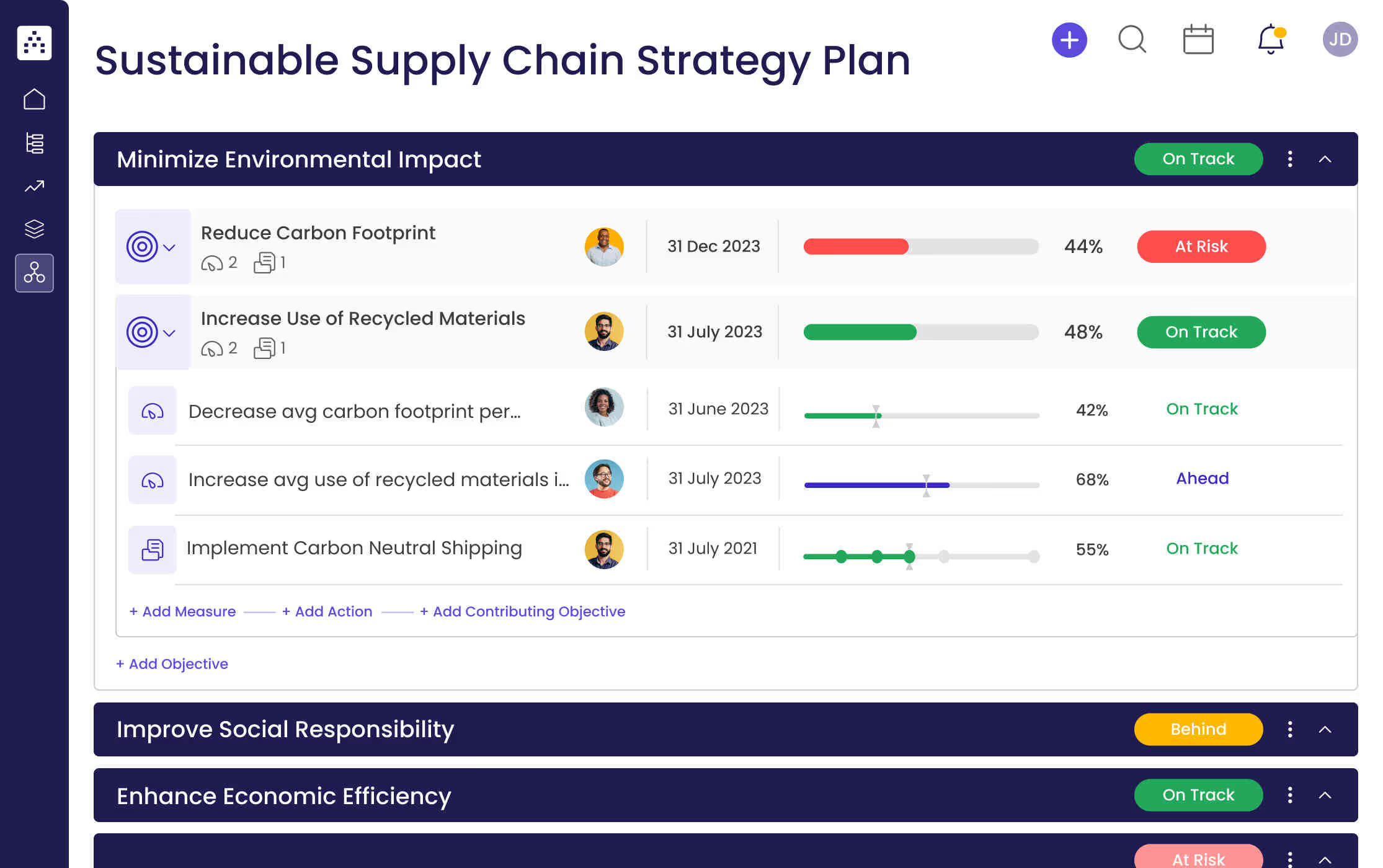What is a Sustainable Supply Chain Strategy?
A sustainable supply chain strategy is an approach to managing a supply chain that focuses on the environmental, social and economic impact of the organization's operations. It involves taking into account the environmental and social impact of all activities related to the supply chain, from sourcing and production through to distribution and customer service. It also includes initiatives to reduce waste, increase efficiency and ensure compliance with all applicable environmental, social, and economic regulations.
What's included in this Sustainable Supply Chain Strategy template?
- 3 focus areas
- 6 objectives
- 6 projects
- 6 KPIs
Each focus area has its own objectives, projects, and KPIs to ensure that the strategy is comprehensive and effective.
Who is the Sustainable Supply Chain Strategy template for?
This template is designed for supply chain professionals and sustainability managers who want to develop a sustainable supply chain strategy. It provides a framework for creating a plan that focuses on reducing environmental impact, increasing social responsibility, and improving economic efficiency.
1. Define clear examples of your focus areas
The first step in creating a sustainable supply chain strategy is to identify and define focus areas. These are the specific topics or areas of concern that the strategy should address. Examples of focus areas may include reducing environmental impact, increasing social responsibility, or improving economic efficiency.
2. Think about the objectives that could fall under that focus area
Once focus areas have been identified, the next step is to define objectives for each focus area. These objectives are the specific goals that the strategy should aim to achieve. Examples of some objectives for the focus area of Minimize Environmental Impact could be: Reduce Carbon Footprint, and Increase Use of Recycled Materials.
3. Set measurable targets (KPIs) to tackle the objective
The next step is to set measurable targets for each objective. These targets, known as Key Performance Indicators (KPIs), are measurable objectives that can be used to track the progress of the strategy. Examples of KPIs may include decreasing the average carbon footprint per shipment, increasing the average use of recycled materials in packaging, or increasing the average paid vacation time. An example of a KPI for the focus area of Minimize Environmental Impact could be: Decrease avg carbon footprint per shipment from 2.2 kg CO2 to 1.5 kg CO2.
4. Implement related projects to achieve the KPIs
Once the KPIs have been set, the next step is to implement related projects, or specific actions, that will help to achieve the KPIs. Examples of projects may include implementing carbon-neutral shipping, increasing the use of recycled materials in packaging, or increasing the number of female executives.
5. Utilize Cascade Strategy Execution Platform to see faster results from your strategy
Finally, Cascade Strategy Execution Platform can help to ensure that the strategy is implemented efficiently and effectively, and that the desired results are achieved in a timely manner. Cascade provides an easy-to-use interface for tracking and monitoring progress, and provides real-time insights into performance and results.


